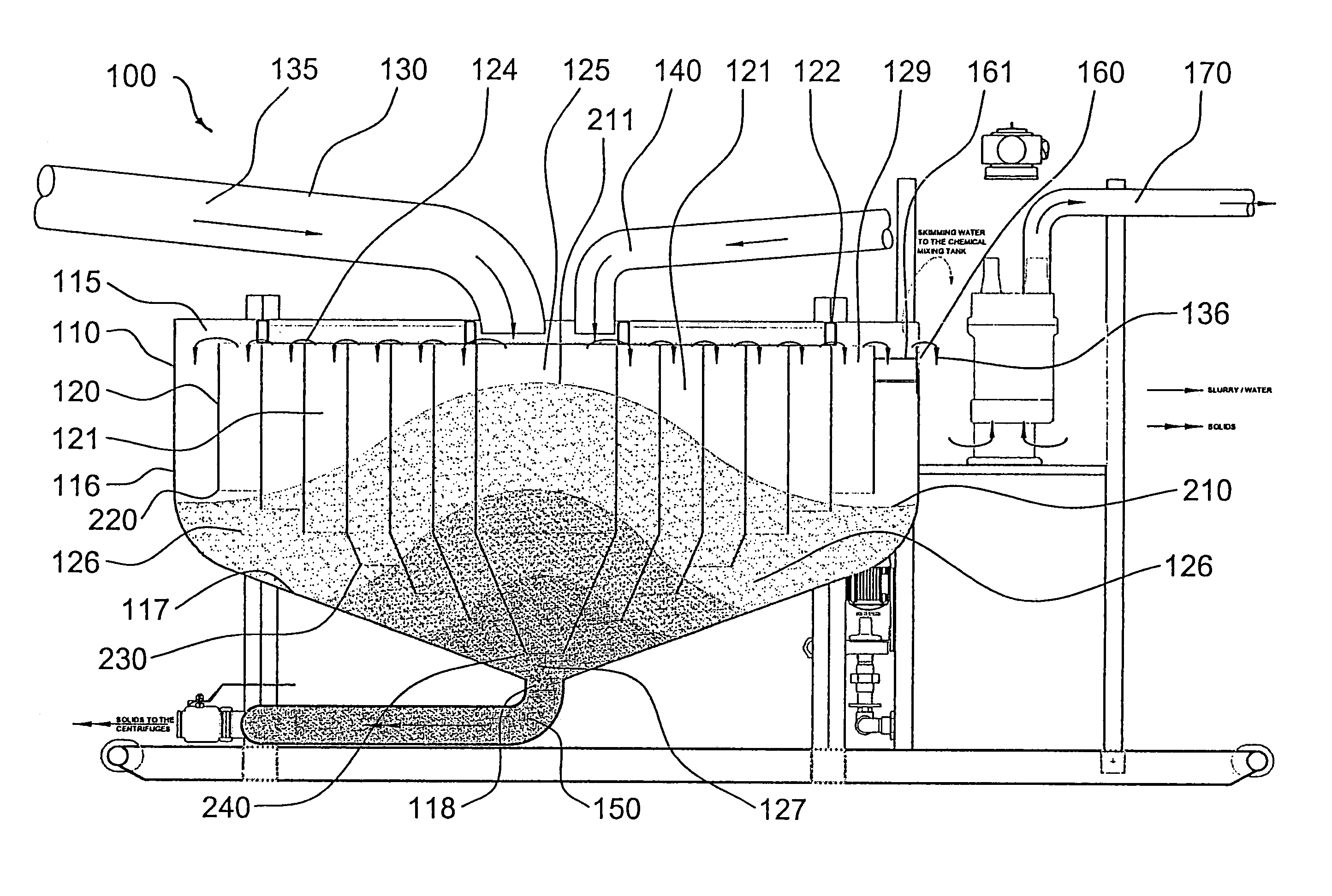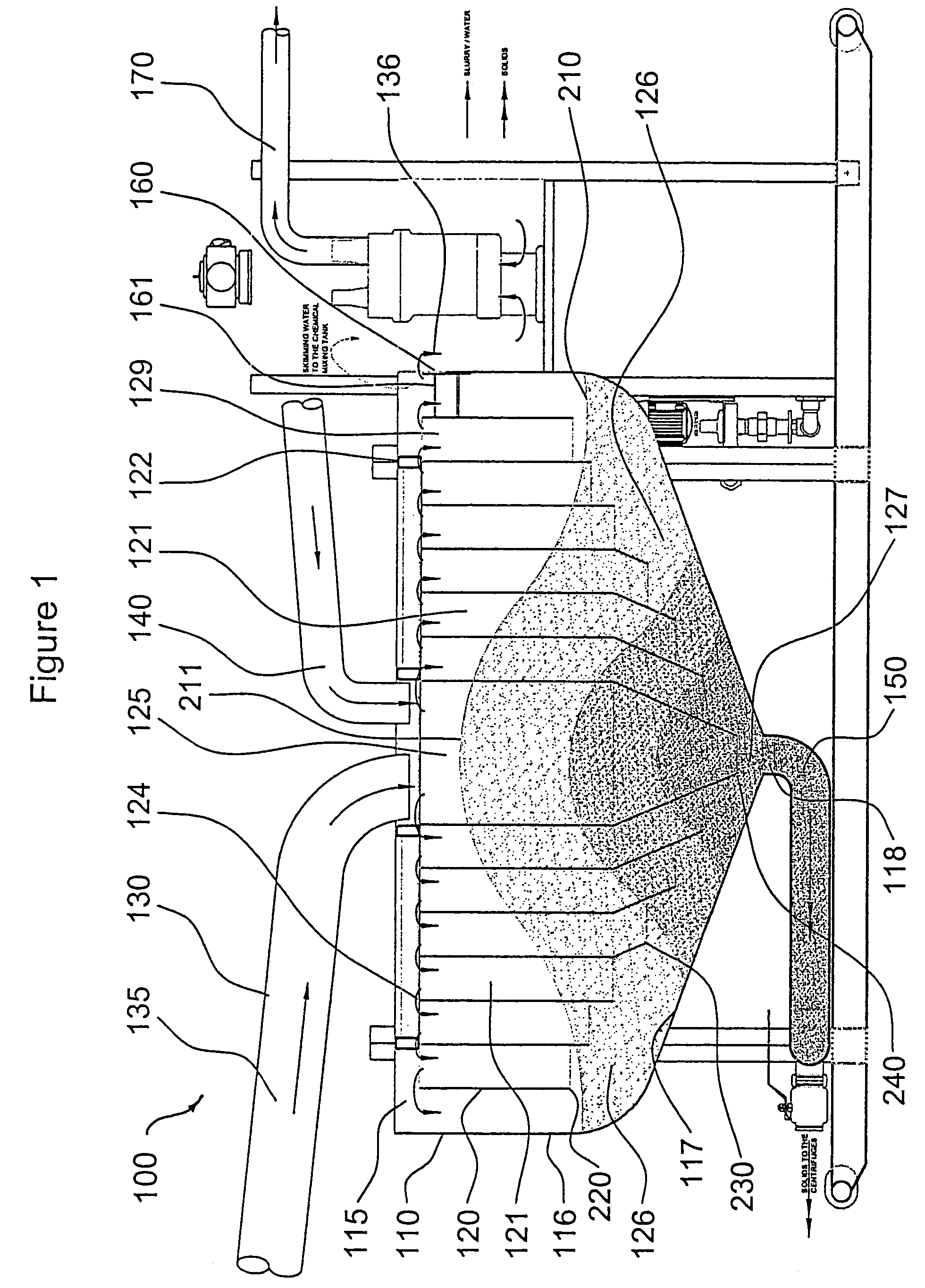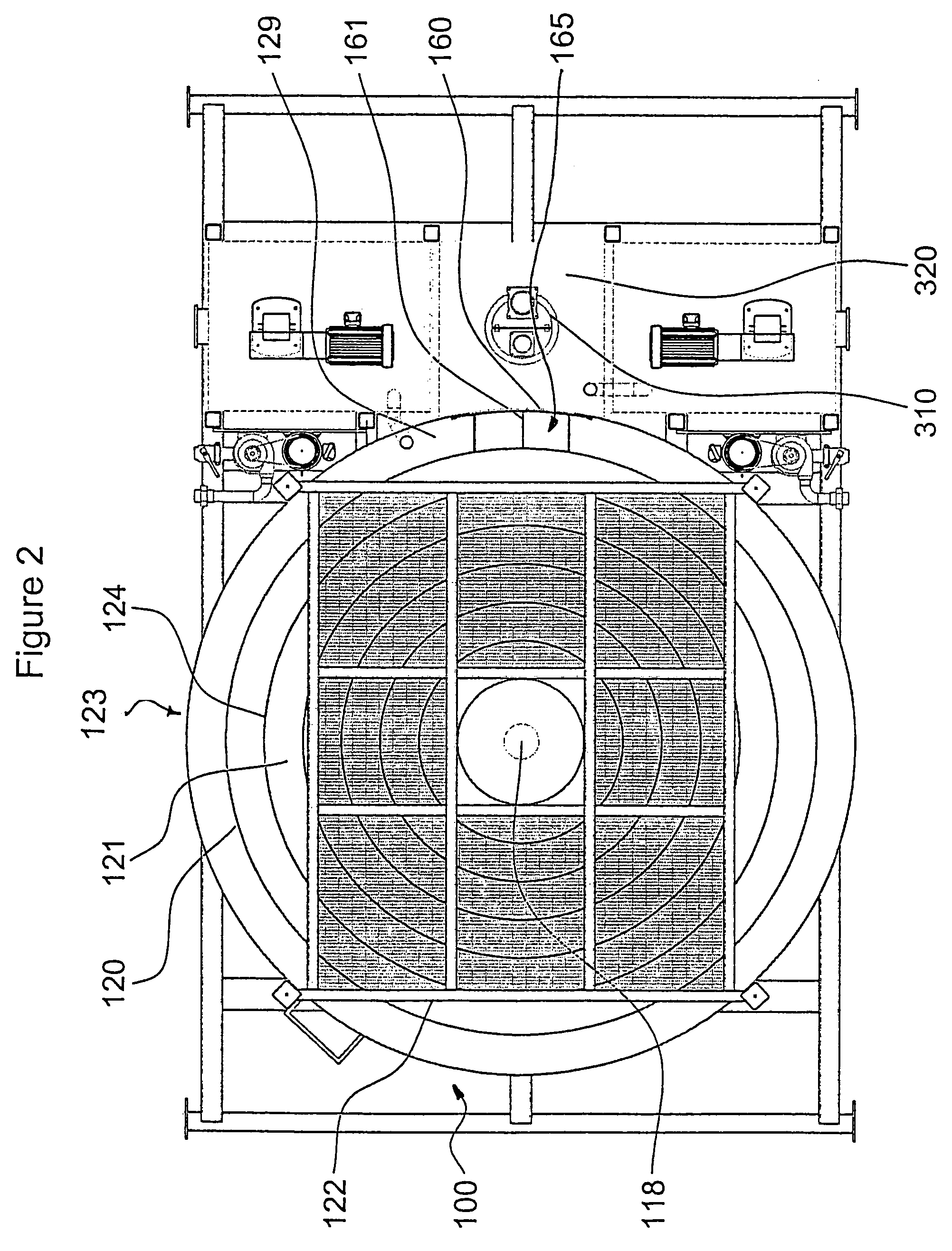Apparatus and system for concentrating slurry solids
a technology of concentrating apparatus and slurry, applied in the field of separation solids, can solve the problems of significant capital and operational costs of processing slurry using centrifuge-based systems, known but expensive methods for mechanical separation solids, and relatively low efficiency, so as to facilitate the buildup of solids mass, reduce capital and operational costs, and reduce the effect of rig down tim
- Summary
- Abstract
- Description
- Claims
- Application Information
AI Technical Summary
Benefits of technology
Problems solved by technology
Method used
Image
Examples
Embodiment Construction
[0055]Reference is now made in detail to FIGS. 1–8, in which identical reference numbers identify similar components.
[0056]Referring now to FIGS. 1–5, there is illustrated a preferred embodiment of an apparatus denoted generally as 100 comprising a concentration tank 110 having an inlet 115, sidewalls 116, a conical base 117, an outlet 118, baffles 120, chambers 121, fluid return 140, exit conduit 150, and at least one skimmer or drain 160. On start-up, apparatus 100 is filled with water (not shown) and centrifuges (not shown) may be operated to create suction at outlet 118. A stream of pre-flocculated slurry 135 enters tank 110 from conduit 130 through inlet 115 directly into central chamber 125 where the slurry drops towards bottom space 127 of tank 110 at a volume per unit time sufficient to fill outlet 118 and then backup along annular passage 126 until tank 110 is substantially filled with slurry displacing the water with which it was filled on start-up. In the course of displa...
PUM
| Property | Measurement | Unit |
|---|---|---|
| mass density | aaaaa | aaaaa |
| mass | aaaaa | aaaaa |
| conical mass | aaaaa | aaaaa |
Abstract
Description
Claims
Application Information
 Login to View More
Login to View More - R&D
- Intellectual Property
- Life Sciences
- Materials
- Tech Scout
- Unparalleled Data Quality
- Higher Quality Content
- 60% Fewer Hallucinations
Browse by: Latest US Patents, China's latest patents, Technical Efficacy Thesaurus, Application Domain, Technology Topic, Popular Technical Reports.
© 2025 PatSnap. All rights reserved.Legal|Privacy policy|Modern Slavery Act Transparency Statement|Sitemap|About US| Contact US: help@patsnap.com



